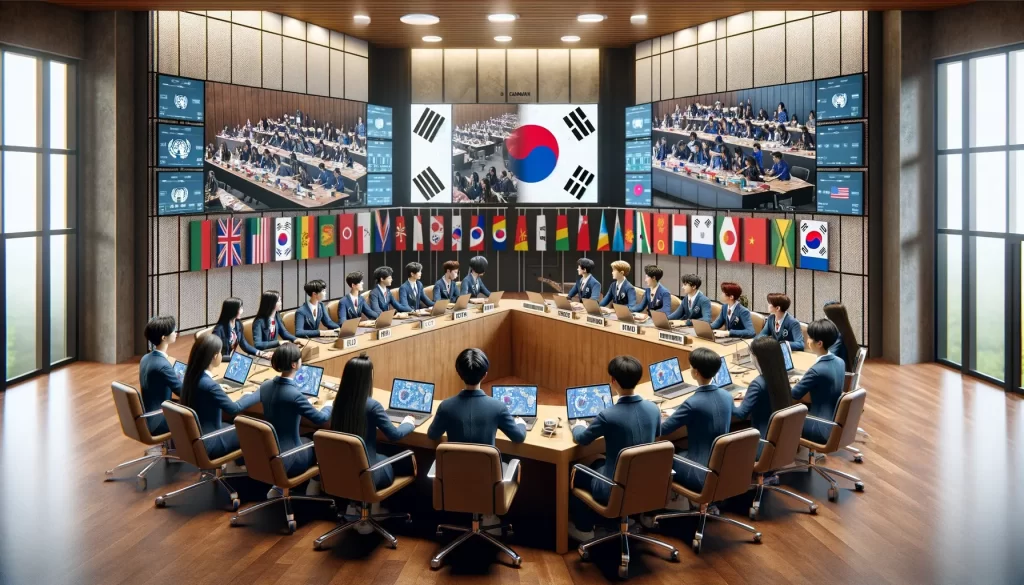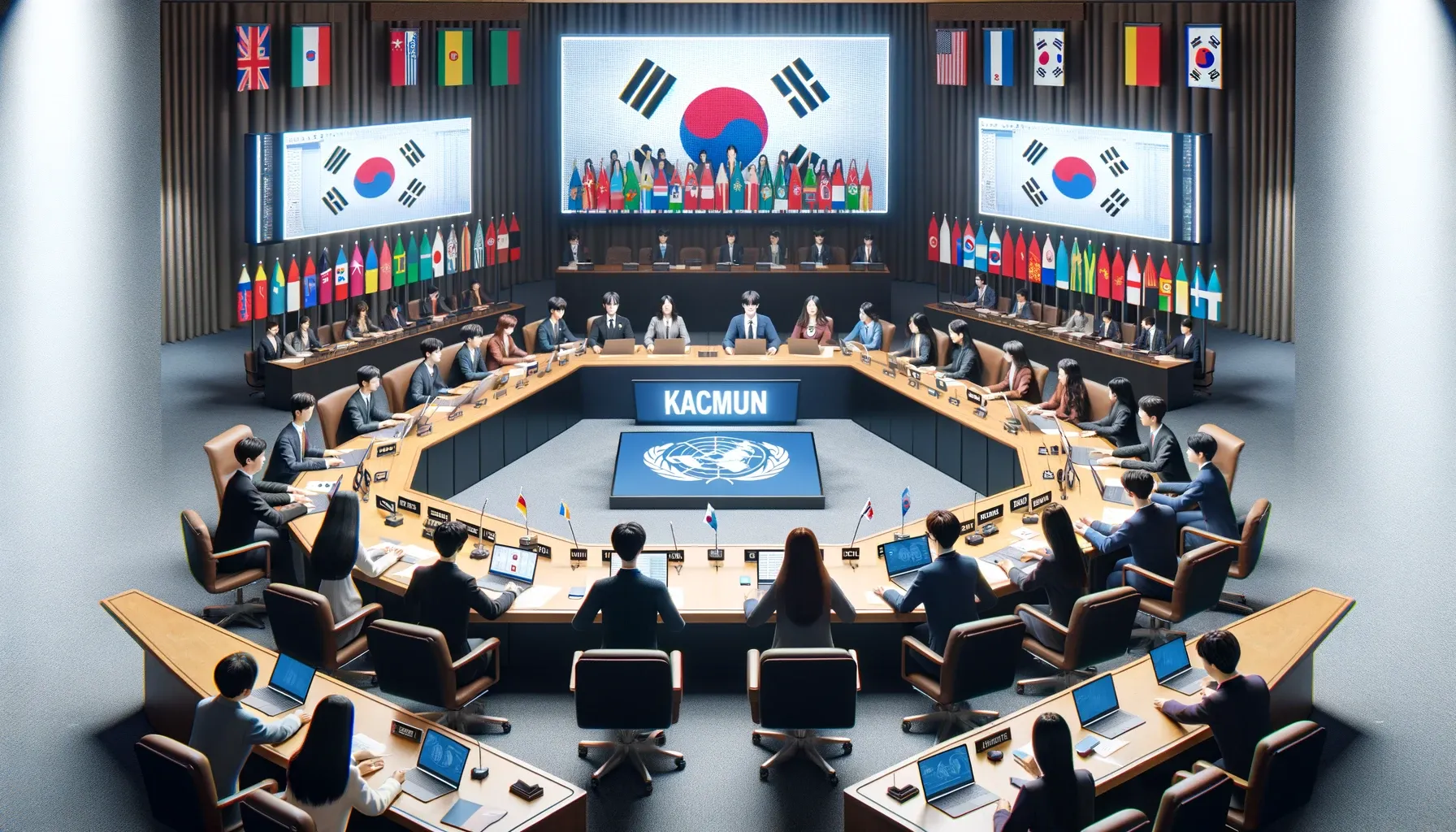Table of Contents
Unlock global leadership potential with KACMUN, a transformative Model UN experience for Korean-American youth. Empowerment, diversity, and impactful change await. Join us!
The Korean American Coalition Model United Nations (KACMUN) stands as a dynamic initiative tailored for Korean American high school students eager to delve into international relations, refine critical analysis skills, and leave a lasting mark on the diplomatic stage. Founded to nurture unity, diversity, and positive change, KACMUN resonates not only within the Korean-American community but extends its impact beyond. As an integral component of the Korean American Coalition, KACMUN crafts an immersive learning environment, urging members to delve into their heritage while actively participating in profound discussions with delegates worldwide.
KACMUN’s roots extend back as the longest consecutively running program in the Korean-American community. Adapting to the evolving needs of its participants and the global discourse, KACMUN currently operates in a virtual format, conducting weekly 2.5-hour sessions from September to May, complemented by in-person Model United Nations conferences.
Nurturing Unity and Cultural Discourse
Kacmun, an acronym for Korean American Coalition Model United Nations, serves as a hub for passionate delegates striving to uplift their community. This conference acts as a catalyst for insightful discussions, addressing social issues affecting not only the Korean-American population but also diverse communities. Kacmun’s primary objective is to foster unity and facilitate meaningful interactions among its members.
Empowering Future Leaders
Participants in Kacmun join a forum focused on a broad spectrum of social concerns, promoting understanding and collaboration among diverse backgrounds. This fosters innovative ideas and solutions, empowering individuals to make a tangible impact in their communities. By emphasizing collaboration, Kacmun shapes future leaders equipped to tackle community-oriented challenges.
Read also: Cat in the Chrysalis Spoiler

The Power of Model United Nations
Model United Nations (MUN) serves as an academic simulation, immersing students in the world of diplomacy, international relations, and cultural exchange. Within MUN, participants represent various countries, engaging in debates and negotiations to address global issues and formulate resolutions for mutual benefit.
Unveiling Global Realities
The relevance of MUN lies in its capacity to introduce students to international politics and diplomacy, deepening their understanding of global governance. MUN simulations expose students to complex issues, fostering cooperation among nations and the need for consensus-building.
A Training Ground for Life Skills
Beyond diplomacy, MUN equips students with critical thinking, negotiation, and effective communication skills applicable in academic and professional realms. Participating in MUN cultivates an appreciation for cultural differences and the role of diplomacy in fostering international collaboration.
KACMUN’s Role in Leadership Development
KACMUN, the Korean American Coalition Model United Nations, emerges as a pivotal platform for nurturing leadership skills among Korean American high school students. This organization achieves its goal through a dual focus on personal growth and skill development workshops.
Personal Growth Journey
KACMUN’s activities aim at fostering self-improvement by enhancing public speaking and negotiation skills, building networks, honing critical analysis, and emphasizing collaboration and teamwork.
Skill Development Workshops
Specialized workshops offered by KACMUN concentrate on enhancing specific skill sets crucial for effective leadership—ranging from public speaking and critical analysis to negotiation and networking.
The Significance of Research in KACMUN
Research plays a pivotal role in KACMUN, enabling participants to comprehend complex global issues and develop essential leadership skills. Participants delve into extensive research to understand their assigned nation’s policies, stances, and history concerning the topic at hand.
Shaping Critical Analysis
Research in KACMUN fosters critical analysis skills, helping participants evaluate source credibility and think holistically—a skill paramount not only in MUN conferences but also in real-world decision-making processes.
Final Words
In Final Words, KACMUN is a beacon for empowering Korean-American youth toward global leadership. Beyond a conference, it’s a transformative platform fostering unity and diversity, shaping future leaders through rich initiatives. Emphasizing collaboration, critical analysis, and effective communication, KACMUN equips participants with valuable skills to navigate our interconnected world.
People Also Ask
What is the Korean-American Coalition Model United Nations?
The Korean American Coalition Model United Nations (KAC MUN) is a student-run program that simulates the United Nations for middle and high school students in Los Angeles County. Through role-playing as delegates from different countries, students learn about diplomacy, global issues, and Korean perspectives.
What percent of the United Nations troops in Korea were American?
Approximately 33% of the United Nations troops fighting in the Korean War were American. This made the US the largest contributor of troops to the UN effort.
Who led American UN forces in Korea?
General Douglas MacArthur served as the supreme commander of the United Nations Command during the Korean War, leading American and allied forces.
Who technically won the Korean War?
The Korean War ended in a military stalemate with no formal peace treaty signed. Neither side achieved its ultimate objectives, and the Korean Peninsula remains divided to this day.
Why did Korea split into two countries?
Korea’s division into North and South was the result of complex political and ideological factors following World War II and the Cold War. The superpowers’ influence, differing political systems, and the Korean War all played a role in the creation of two separate Korean states.




